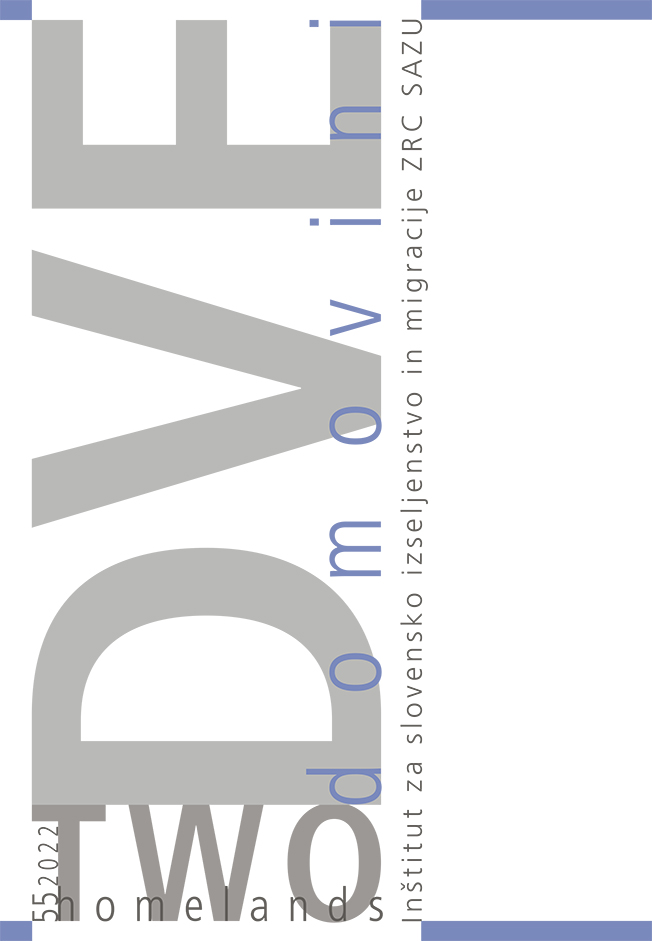The Hungarian State and Diasporic Intervention in the United States in the Early Twentieth Century
DOI:
https://doi.org/10.3986/dd.2022.1.02Keywords:
migration, Austria-Hungary, American Action, Pan-SlavismAbstract
Austria-Hungary’s leaders were highly interventionist in their response to trans-Atlantic migration, eager to maintain loyalty among their diaspora in America. This article explores the very active role that the Austro-Hungarian government—especially the Hungarian Prime Minister’s Office—played in overseeing migrant loyalty in the United States from 1902 until World War I, examining both its successes and the protests it inspired. Intervention followed migrants overseas: the government integrated itself into the migration bureaucracy and attempted to integrate the home government into migrants’ American lives through the press, churches, and cultural events. Several of Austria-Hungary’s efforts to maintain the loyalty of its migrating citizens backfired, sparking protest.
Downloads
References
Agstner, Rudolf (2012). Austria(-Hungary) and its Consulates in the United States of America Since 1820. Berlin: LIT Verlag.
Apponyi, Albert (1935). The Memoirs of Count Apponyi. New York: Macmillan Company.
Benkart, Paula K. (1983). The Hungarian Government, the American Magyar Churches, and Immigrant Ties to the Homeland, 1903–1917. Church History 52, 312–321.
Braun, Marcus (1906). Immigration Abuses; Glimpses of Hungary and Hungarians: A Narrative of the Experiences of an American Immigrant Inspector while on Duty in Hungary, Together with a Brief Review of That Country’s History and Present Troubles. New York: Pearson Advertising Co.
Budapesti Hírlap (1884). 21. 11. [1884?].
Choate, Mark I. (2008). Emigrant Nation: The Making of Italy Abroad. Cambridge: Harvard University Press.
Frank, Tibor (1999). Ethnicity, Propaganda, Myth-Making: Studies on Hungarian Connections to Britain and America, 1848–1945. Budapest: Akadémiai Kiadó.
Hale, Chandler (1902). Letter to John Hay, 4. 11. 1902. National Archives and Records Administration, T-157, Reel 48. Washington, DC.
Hungary Active Here: Finds Disloyal Subjects in the United States: Tries to Retain Hold on Slavonians and Ruthenians (1903). Boston Evening Transcript, 27. 7. 1903.
Hungary Exposed: Secret state document reveal[s] the plotting of that government in the United States: American Slovaks and Ruthenians, “the Irish of Hungary,” to be the victims (1903). (Copy can be found at the New York Public Library, New York, NY, mistakenly with a suspected publication date of 1907.)
Kazinczy, Béla (1902). Report of 11 Apr. 1902. Magyar Nemzeti Levéltár – Országos Levéltára [Hungarian National Archives] (MNL OL), K26, 575 cs., 20 tét.
Kende, Géza (1927). Magyarok Amerikában: Az Amerikai Magyarság Története, 1583–1927 Cleveland: Szabadság.
Kuthy, Alexander (1918). Letter to Consul of Sweden, 3. 8. 1918. Haus-, Hof-, und Staatsarchiv (HHStA), PA XXXIII, 101.
Letter to Ottokar Czernin (1915). Document 6977a, [1915?]. Haus-, Hof-, und Staatsarchiv (HHStA), PA XXXIII, 99.
Maxwell, Alexander (2009). Slavic Hungary, the Czechoslovak Language and Accidental Nationalism. London: IB Tauris.
Memorial Presented by the Roman Catholic Priests of Slovak Nationality to their Eminences the Cardinal Archbishop, Archbishops and Bishops of the United States (1902). Wilkes-Barre, PA. (Copy can be found in the Warshaw Collection of Business Americana Subject Categories: Religion, Subseries 4: Publications, circa 1791–1933, Box 3, Folder 4, Archives Center, National Museum of American History, Smithsonian Institution, Washington, DC)
Mérey, Kajetan (1902). Letter to US Embassy in Vienna, 31. 10. 1902. National Archives and Records Administration (NARA), T-157, Reel 48.
More About that Hungarian Flag (1902). Springfield Republican, 1. 9. 1902, 4.
Nageleisen, Urbam C. (1904). Letter to Consul Thomas von Dessewffy, 22. 12. 1904. Haus-, Hof, und Staatsarchiv (HHStA), AR F15, 30.
Phelps, Nicole M. (2013). U.S.-Habsburg Relations from 1815 to the Paris Peace Conference: Sovereignty Transformed. Cambridge: Cambridge University Press.
Poznan, Kristina Evans (2018). “Migrant Nation-Builders: The Development of Austria-Hungary’s National Projects in the United States, 1880s–1920s.” PhD diss., College of William & Mary.
Priest Exposes Plot: Hungarian Scheme to Retain Control of Emigrants (1903). Washington Post, 26. 7. 1903, 6.
Puskás, Julianna (1982). Kivándorló Magyarok az Egyesült Államokban, 1880–1940. Budapest: Akadémiai Kiadó.
Slovak National Committee (1911). Count Albert Apponyi: The So-called Angel of Peace and what He Stands for in Hungary. Cleveland, OH, USA.
Steidl, Annemarie (2020). On Many Routes: Internal, European, and Transatlantic Migration in the Late Habsburg Empire. West Lafayette: Purdue University Press.
That Hungarian Flag (1902). Springfield Republican, 7. 9. 1902, 8.
The Cesko-Americka Tiskova Kancelar (1912). Denní Hlasatel, 29. 4. 1912.
The Third Year of Activity of the Cesko-Americka Tiskova Kancelar. Denní Hlasatel, 17. 11. 1912.
von Nuber, Alexander (1902). Letter to Ladislas von Hengelmüller, 16. 7. 1902. Magyar Nemzeti Levéltár – Országos Levéltára [Hungarian National Archives] (MNL OL), K26, 575 cs., 20 tét.
von Nuber, Alexander (1903). Report to Carl von Giskra, 8. 8. 1903. Magyar Nemzeti Levéltár – Országos Levéltára [Hungarian National Archives] (MNL OL), K26, 605 cs., 20 tét.
von Nuber, Alexander (1910). Letter to K.u.K. Foreign Ministry, 10. 10. 1910. Haus-, Hof-, und Staatsarchiv (HHStA), AR F15, 31.
von Ploennies, Hermann Ritter (1911). Report of 19 Apr. 1911. Haus-, Hof-, und Staatsarchiv (HHStA), AR F15, 29.
Zahra, Tara (2016). The Great Departure: Mass Migration from Eastern Europe and the Making of the Free World. New York: W.W. Norton & Co.
Published
Versions
- 2022-08-27 (4)
- 2022-06-13 (3)
- 2022-06-13 (2)
- 2022-01-31 (1)
How to Cite
Issue
Section
License

This work is licensed under a Creative Commons Attribution-NonCommercial-NoDerivatives 4.0 International License.
Authors guarantee that the work is their own original creation and does not infringe any statutory or common-law copyright or any proprietary right of any third party. In case of claims by third parties, authors commit their self to defend the interests of the publisher, and shall cover any potential costs.
More in: Submission chapter





